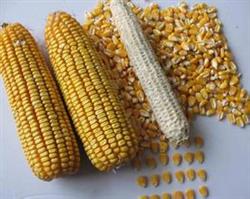Control techniques of Maize Leaf spot and Leaf spot

Corn leaf spot and small leaf spot are mainly harmful to leaves, and sometimes infect leaf sheaths and bracts. Leaf spot can not only damage the above-mentioned parts, but also damage ears. In many areas, these two diseases are collectively referred to as "corn spot". 1, symptom identification: the typical symptom of corn leaf spot is that the small spot expands rapidly and grows into a prismatic spot, the serious one is as long as 10mur30cm, and sometimes several spots are linked together to form irregular spots. At first, the disease spot becomes bluish gray, and finally becomes brown dead spot. When the air is moist, the disease spot can grow black mildew, that is, the conidiophores and conidia of the pathogen. The symptom characteristic of corn leaf spot is that the disease spot is small, generally no more than 1 cm long, the width is only limited between two leaf veins, nearly elliptical shape, the color of the spot edge is dark, it is Auburn. In addition, the number of disease spots is generally more. The pathogens of maize leaf spot and leaf spot overwintered with conidia attached to the remnant of the diseased plant, or with mycelium latent in the diseased tissue. The spores germinated in the second year caused the first infection, and the susceptible plants produced a large number of conidia, which were transmitted by wind and rain to cause re-infection. 2. The factors affecting the disease: the germination and invasion of spores and the formation and spread of spores all need certain climatic conditions, in which temperature and humidity are the main. The optimum temperature for spore formation, germination and invasion of Alternaria oryzae was 20-25C0, and the optimum temperature was 20-32C0, which was slightly higher than that of Xanthomonas oryzae, so it was more serious in summer corn planting area and spring corn area. 3. Control methods: the prevalence of the disease is determined by three factors: first, planting susceptible varieties in a large area; second, there are a large number of bacteria; third, there are suitable environmental conditions for the disease. Therefore, the prevention and control of diseases should start from these three aspects. The main results are as follows: (1) selection of disease-resistant varieties: this is the fundamental way to control large and small leaf spot, and there are obvious differences in disease resistance among different varieties. (2) eliminating the source of overwintering bacteria and reducing the amount of bacteria in the initial stage of the disease: the amount of bacteria can be reduced by crop rotation. In addition, the diseased remains in the field should be thoroughly removed and turned deep in time after corn harvest, which is an important measure to reduce the source of primary infection. (3) Chemical control: 40% gram distemper powder or 70% mancozeb wettable powder 600 times liquid spray. Spot disease 50% carbendazim wettable powder 500 times liquid, or 70% methyl topiramate wettable powder 500 times liquid spray. Pesticide application should start at the initial stage of the disease, so that the development of the disease can be effectively controlled, and it is necessary to spray again every 7 days or so.
- Prev

We should pay attention to the selection of spring sowing corn.
How to select good maize varieties is a key issue related to whether the yield can be increased in autumn. When selecting improved varieties of corn, farmers should follow the following principles: first, seed selection according to the conditions of heat resources. The local heat resources are related to the growing period of maize varieties. The corn variety with long growing period has good yield performance.
- Next

Occurrence and Control of Curvularia Leaf spot in Maize
Corn Curvularia leaf spot, also known as yellow spot disease, farmers called yellow leaf disease, is another important disease of maize in our province in recent years after big spot, small spot and rust. After the occurrence of Curvularia leaf spot, the leaves were covered with disease spots, which withered and died, which seriously affected the growth of maize and reduced the yield. First, the occurrence of symptoms:
Related
- The first cup of black tea in spring, the flavor and history of tea gardens in Kenya, Africa
- The computer can not only choose potatoes, but also grow tea rice. AI will grow winter oolong tea champion.
- It is not only the inflated tea bitten by insects, but also engraved with the four seasons tea in Beipu.
- The Oriental Beauty Tea Festival in Zhuxian County takes the stage at the weekend to experience the plus-size feast of oil tea.
- & quot; Oriental Beauty Tea & Exploration of Emei in Hsinchu, the hometown of quot;
- The new variety of strawberry "Tainong 1" dessert is the first choice with mellow aroma. Crimson gorgeous
- History of Tea in Taiwan: from Wild Inner Mountain to Export Tea Garden
- Two types of Taiwan Oriental Beauty Black Tea won the British three-Star Award for Childhood Tea Xiang Zhang Jiaqi changed from pilot to champion tea maker.
- Banana species and varieties: the planting history of Taiwan Xianren banana and dwarf banana is long, is banana disease resistant?
- Coffee planting Technology: Qianjie Coffee from Seedling to harvesting

